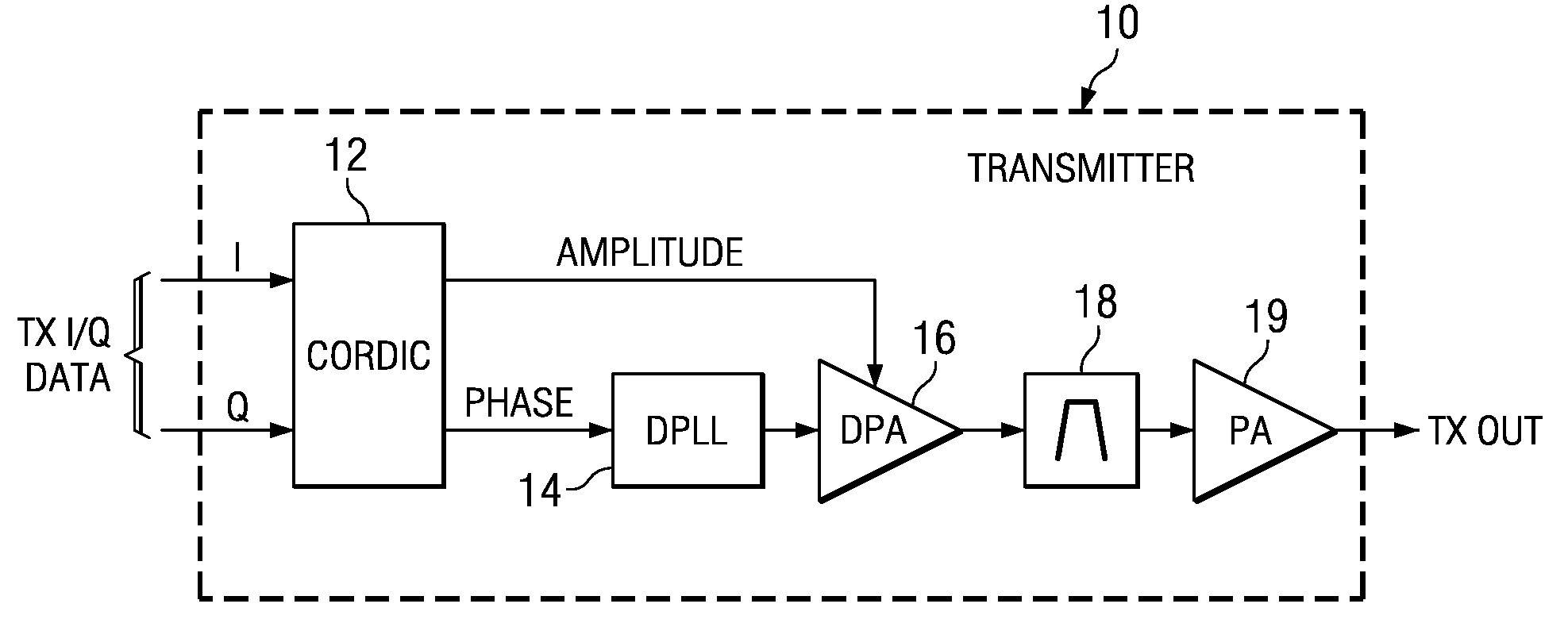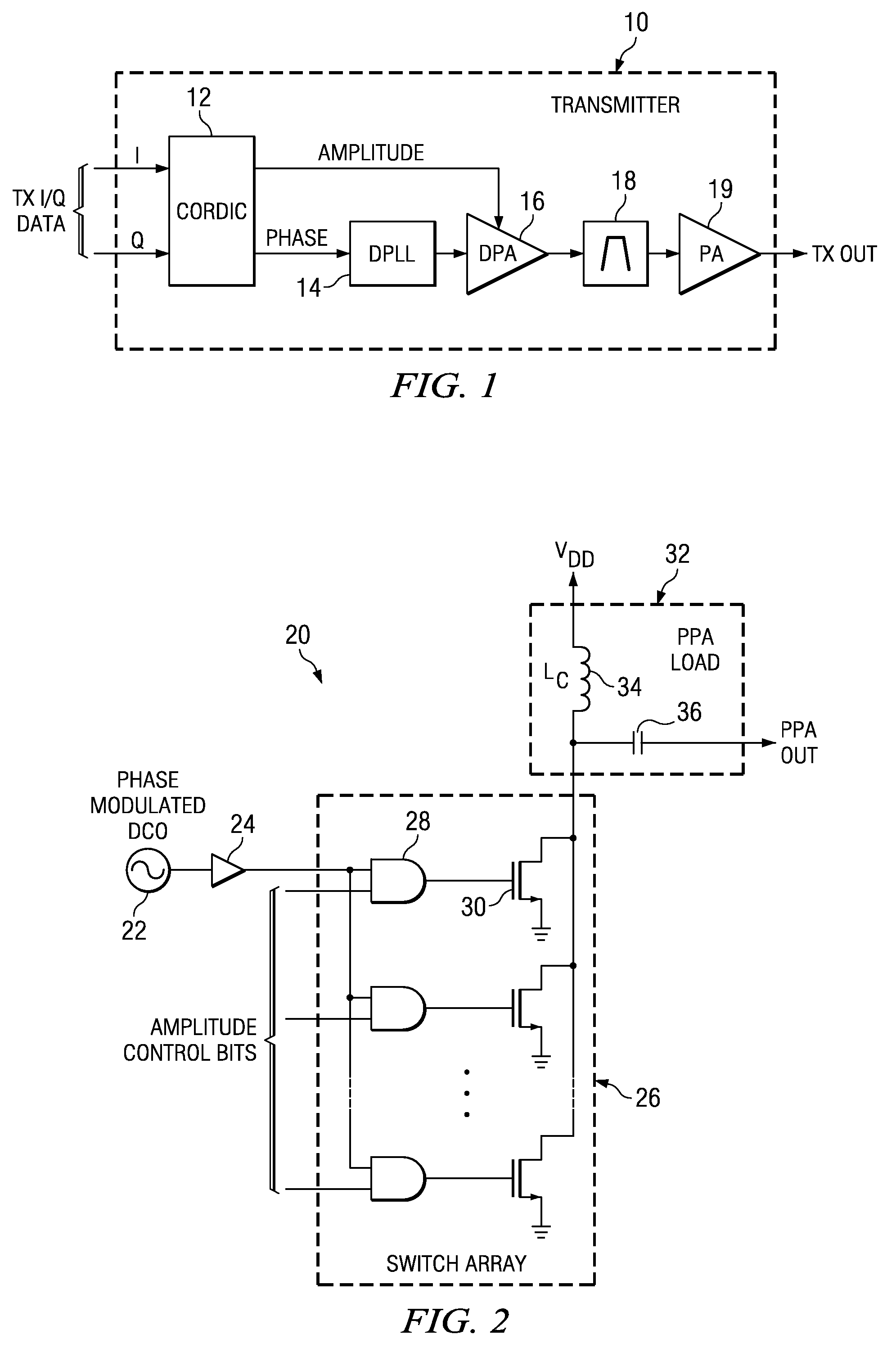High dynamic range pre-power amplifier incorporating digital attenuator
a high-dynamic range, pre-power amplifier technology, applied in the field of data communication, can solve the problems of limited current consumption requirements for these transmit buffers, low power consumption of the transmit chain, and inability to maintain constant output power levels in amplitude-modulated, and achieve the effect of increasing the dynamic range of the switch array
- Summary
- Abstract
- Description
- Claims
- Application Information
AI Technical Summary
Benefits of technology
Problems solved by technology
Method used
Image
Examples
Embodiment Construction
Notation Used Throughout
[0033] The following notation is used throughout this document.
TermDefinitionACAlternating CurrentASICApplication Specific Integrated CircuitCDMACode Division Multiple AccessCMOSComplementary Metal Oxide SemiconductorCWContinuous WaveDACDigital to Analog ConverterDCDirect CurrentDCODigital Controlled OscillatorDEMDynamic Element MatchingDPADigital Power AmplifierDPLLDigital Phase Locked LoopDRACDigital to RF Amplitude ConverterDRPDigital RF Processor or Digital Radio ProcessorDSPDigital Signal ProcessorEDGEEnhanced Data rates for Global EvolutionFPGAField Programmable Gate ArrayGPRSGeneral Packet Radio ServiceGSMGlobal System for Mobile CommunicationICIntegrated CircuitLSBLeast Significant BitLUTLook Up TableMSBMost Significant BitNFETn-channell Field Effect TransistorNMOSn-channel Metal Oxide SemiconductorPAPower AmplifierPMOSp-channel Metal Oxide SemiconductorPPAPre-Power AmplifierPVTProcess Voltage TemperatureRFRadio FrequencySAWSurface Acoustic WaveSNR...
PUM
 Login to View More
Login to View More Abstract
Description
Claims
Application Information
 Login to View More
Login to View More - R&D
- Intellectual Property
- Life Sciences
- Materials
- Tech Scout
- Unparalleled Data Quality
- Higher Quality Content
- 60% Fewer Hallucinations
Browse by: Latest US Patents, China's latest patents, Technical Efficacy Thesaurus, Application Domain, Technology Topic, Popular Technical Reports.
© 2025 PatSnap. All rights reserved.Legal|Privacy policy|Modern Slavery Act Transparency Statement|Sitemap|About US| Contact US: help@patsnap.com



